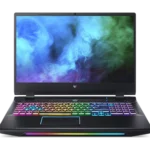
NVIDIA GeForce GTX 280 Review

Whether you are looking for a card to upgrade your current system or want to invest in a new gaming PC, the Nvidia Geforce GTX 280 is the card for you. It features the latest graphics technology, a powerful GPU, and fast memory. It is also compatible with DirectX 10.1, which is excellent for gaming. This card is also great for PhysX gaming and comes with Power draw support.
PhysX support
PhysX is a real-time physics engine that provides life-like physical interactions in games. The GTX 280, part of Nvidia’s new HybridPower ecosystem, supports PhysX-ready graphics and HD video. It is also CUDA-ready. The GTX 280’s core clock runs 615MHz, fed by 512-bit 2214MHz GDDR3 memory. It supports three-way SLI and parallel computing mode, and it is capable of delivering fluid frame rates. It also supports PureVideo HD.
It should be noted that while the NVIDIA GeForce GTX 280 does support PhysX, it isn’t the first graphics card to do so. The GeForce GTX 260, scheduled to launch on June 26, has a much higher number of shaders and uses a different architecture. It has 192 shaders, running at 1242MHz. It also has one ROP partition disabled and uses a single six-pin PCI-Express power connector.
While the NVIDIA GeForce GTX 280 and GTX 260 aren’t the first to support PhysX, they are the first graphics cards to do so in a hardware-accelerated manner. This means that the GPU does the calculations instead of using the CPU to do the physics computations. This also means that the CPU doesn’t have to do any pixel crunching.
The graphics card is also equipped with a texture cache, which combines memory accesses. This helps it handle read-write memory operations with higher bandwidth. It also supports 3-way SLI, boosting performance by 50 to 80 percent. The GTX 280’s other features include a setup unit, raster units, ten teraflops of memory bandwidth, and 240 scalar operations, processors.
PhysX is an essential piece of Nvidia’s Unified Architecture. Compared to the first generation of the GPU, it offers 50% more gaming performance. It also has improved power consumption.
As part of their marketing strategy, Nvidia has released a list of games supporting PhysX. They claim that the list contains over 150 titles. Some of the most notable titles include the Sony Playstation 3, Nintendo Wii, and Microsoft Xbox 360.
Nvidia has also announced that it is acquiring Ageia, a physics-processing company that previously offered a PhysX SDK.
Power draw
Using the GT200 graphics processor, the NVIDIA GeForce GTX 280 is a powerful graphics card. It has a die area of 576mm2, and its power requirement is 236W. The card will be released on June 26.
As for the memory, the card has a bandwidth of 141.7GB/s. It has 240 scalar processing cores, ten thread dispatch logic, and 80 texture mapping units. The card also features a 512-bit memory interface. The memory runs at a frequency of 100MHz. It will be compatible with DirectX 11 feature level 10_0.
The NVIDIA GeForce GTX 280 also supports hybrid Power. This allows it to switch between two and three graphics outputs seamlessly. This feature can be used with certain nForce motherboards. The card will draw significantly less Power when using the hybrid part.
The power draw of the NVIDIA GeForce GTX 280 is shallow at idle. When the card is inactive, it draws only 25W. This is less than the GTX 9800 GX2’s 325W draw at load. It will also mark 35 W while playing Blu-ray disks.
The GPU is connected to the system through a PCI-Express 2.0 x16 interface. It also has dual eight-pin power connectors. The card will require a power supply that supports 55 Amps on the 12-volt rails.
The NVIDIA GeForce GTX 280 also features a fan that moves more air under load. It is not as quiet as the fan on other high-end NVIDIA graphics cards.
The NVIDIA GeForce GTX 280 is a dual-slot card. It will require an eight-pin PCI-Express power connector. It will also need an 800 Watt power supply.
NVIDIA’s power-saving measures are effective. The GPU uses a chip that constantly monitors its use rate. This is then used to adjust the voltage and frequency. The chip also has a clock gating feature that will turn off the chip parts that are not being used.
NVIDIA’s GeForce GTX 280 is primarily aimed at office users. Its power draw is similar to the Radeon HD 3870 X2’s. However, the GTX 280’s fan is louder than the GeForce FX’s. It also moves more air, making other PC fans work harder.
Missing MUL
During NVIDIA’s GeForce GTX 280 reveal, the company did not make mention of a hidden gem. NVIDIA has been more open about the GT200, however. It is a single-chip, 256 CUDA core machine built on the 65nm fabrication process. It will be available for $649 when it launches tomorrow. It is a bit less powerful than the GTX 8800, but it is an impressive single-chip card.
It features 1GB of GDDR3 memory running at 1107MHz. That’s not as powerful as the dual chip; G80’s memory, but it is an improvement. It will also run faster than the dual-chip G92s in the 9800 GX2 when delivering GFLOPS. It also has a more powerful core clock.
Another exciting feature of the GT200 is the particular function unit. The unit performs both MUL and ADD operations in a single clock. The result is a 50% increase in compute throughput over the standard G8x thread processor. The unit is built similarly to the Cell SPE.
The GT200 will also support GDDR4 memory. The GT200’s ROP partitions can output four pixels per clock cycle, which is 50% more than the G80’s ROPs can output.
The GT200 also has eight ROP partitions, roughly double the number in the G80’s ROPs. Each ROP partition can simultaneously have 32 warps in flight, making this a pretty significant upgrade over the G80’s ROPs.
The GT200 will also support a new 512-bit memory interface that is much faster than the G80’s 256-bit memory interface. It will also help HybridPower, a feature that allows the GT200 to decode video at a lower power level.
The GT200 also has a new trick: it can perform frame-buffer blends in one clock cycle. This is a reasonably complex feat, but it is possible thanks to the GT200’s SFU. It has a larger register file, which purportedly will help in the Perlin noise benchmark.
The GT200’s most considerable feat is that it can do something that the G80’s particular function unit could not. It can perform near full-speed dual-issue of MULs, multiply-add ops, and attribute interpolation.
DirectX 10.1 support
Nvidia GeForce GTX 280 is the latest single-GPU flagship video card. NVIDIA engineers have been hard at work to build the GeForce GTX 280. This is a high-end card made on a 65 nm process and features a 512-bit memory interface. It is also connected to the system via a PCI-Express 2.0 x16 interface. It has a suggested retail price of $649. The card measures 267 mm long and is 10.5 mm thick. It has a 1GB frame buffer memory, 32 ROPs, and 240 processing cores.
GeForce GTX 280 has a shader clock of 1296MHz and a core clock speed of 602MHz. It will also have a 1GB frame buffer memory, 32 raster operator partitions, and 80 texture mapping units. The card’s outputs include a dual-slot cooling solution and two DVI ports.
The GTX 280 card is connected to the system using a PCI-Express 2.0 X16 interface. It has a maximum power draw of 236W. It can also support Triple SLI. In the case of Triple SLI, there are two six-pin PCI-Express connectors, and a third six-pin connector can be used as an adaptor.
The GTX 260 is a large, double-slot card with subtle differences in its construction. It also has a smaller frame buffer size of 896 MB. It can also run Dual-Stream Hardware Acceleration for picture-in-picture content. In addition, it supports CUDA Toolkit 3.0, NVIDIA PhysX, PureVideo, and hybrid power technology.
The GTX 280 and GTX 260 are based on the same core. They also share the same PCI Express x16 2.0 interface and support hybrid power technology. It also supports NVIDIA PhysX and PureVideo, as well as 3-way SLI.
Nvidia GeForce GTX280 has a dual-slot cooling solution. It also has a 236W TDP. This is a significant improvement over the GeForce 8800 series cards. It will be able to match the GeForce 9800 GTX card at 2560×1600. The card also has a shallow idle power draw.
The GTX 280 also supports DirectX 11 feature level 10_0. It will also support the new Green Team, a set of improvements for the GeForce GTX 200 series. This will allow more games to use extra shader hardware.
NVIDIA GeForce GTX 280 Review
89%
NVIDIA GeForce GTX 280 Review Nvidia Geforce GTX 280 features the latest graphics technology, a powerful GPU, and fast memory. It is also compatible with DirectX 10.1, which is excellent for gaming. This card is also great for PhysX gaming and comes with Power draw support.






























